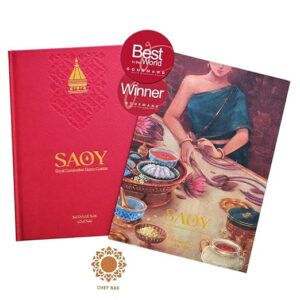Cambodia is a country with a long history. Its rich cultures portray itself in many different forms including dance. Dance in Cambodia consists of Khmer Classical Dance (Royal Ballet of Cambodia or Robam Preah Reach Trop), Folk dance, and Popular dance (Social dance). Moreover, each Khmer Classical Dance has deep meaning and is performed in a soft but strong manner.
Cambodia’s premier performing art form is Khmer classical dance, or Robam Preah Reach Trop, a highly stylized dance form originating from the royal courts. Other names for Khmer classical dance include “Cambodian court dance” and “the royal ballet of Cambodia”, although the latter term can also refer to the National Dance Company of Cambodia. In Khmer, it is formally known as Robam Preah Reach Trop (របាំព្រះរាជទ្រព្យ, lit. “dances of royal wealth”) or Lakhon Preah Reach Trop (ល្ខោនព្រះរាជទ្រព្យ, lit. “theatre of royal wealth”). It is also sometimes called Lakhon Luong (ល្ខោនហ្លួង, lit. “the king’s theatre”). During the Lon Nol regime of Cambodia, the dance tradition was referred to as Lakhon Kbach Boran Khmer (ល្ខោនក្បាច់បូរាណខ្មែរ, lit. “Khmer theatre of the ancient style”), a term that distanced it from its royal legacy.
These oldest art forms (or divine arts) date back from the 1st to the 6th century (roughly during the Funan or Norkor Phnom kingdom) when the performances were used as a funeral rite for Kings. In the next two centuries, during the period of Angkor civilization, the dancers were called Apsara, derived from the Sanskrit word meaning “celestial dancers” and acknowledged as “servants of god”. Apsara dancers were the essence of celestial purity believed to provide the link through which prayers passed from the King (Deva Raja) to the realm of the deities. Performing solely for the gods and their King, they were seen as messengers of peace between the earthly and celestial plains, in order to encourage rain, good crops, prosperity, and protection for the Kingdom. In the Angkor era, the dance was ritually performed at temples and sometimes for the public based on the ancient stone inscriptions. However, the tradition of temple dancers declined during the collapse of Angkor (the 15th century).
Nearly five centuries, this Khmer classical dance was introduced to the general public in the early 20th century during the official visit to France of the King Sisowath of Cambodia (George Bois, a French presentative in the Cambodian court, suggested the Dancers of the court of King Sisowath to exhibit in Paris and at the 1906 Colonial Exposition in Marseilles).
In the Post-Independent era, Queen Sisowath Kossamak became a patron of the Royal Ballet of Cambodia, and several reforms were made to the Royal Ballet in terms of choreography and the length of time of performance, specifically, Dance drama, which was dramatically shortened from all-night spectacles to about an hour in length. The Royal Ballet of Cambodia became widely celebrated as iconic of Cambodian culture, often performed during public events, holidays, official visits, and for tourists visiting Cambodia. For example, this dance was performed during the official visit of Cambodia delegations to the United States, China, and European in 1959, 1960, and the 1960s, respectively.
During the Khmer Rouge regime, the dance tradition suffered setbacks as most of the Cambodian classical artists perished during this regime. Later the fall down of the Khmer Rouge regime in 1979, this sacred dance was revived by surviving Khmer Classical dancers in the refugee camps in eastern Thailand. There were many dances and dance dramas were also reestablished at the Royal University of Fine Arts in Cambodia till it was inducted into the UNESCO Intangible Heritage Lists in 2003.
According to the Inventory of Intangible Cultural Heritage of Cambodia (A joint publication of the Ministry of Culture and Fine Arts and UNESCO) in 2004, the Royal Ballet of Cambodia consists of two repertory categories: Classical Dramas (or Royal Drama or Dance Drama) and Classical Dances (or Royal Ballet or Dance)
There are 35 Classical Dramas or Royal dramas (Dance-dramas). 22 repertories of dance drama have been re-instituted from 1979-2002 and 13 repertories of them have been listed as Lost Classical Drama or Royal Drama.
Classical Dances or Royal Ballet, on the other hand, consist of 83 repertory dances, of which 55 repertories of them have been re-institute from 1979-2002, and 28 repertories of them have been listed as Lost Classical Dances or Royal Ballet.
For further information, please access via: the Royal Ballet of Cambodia



